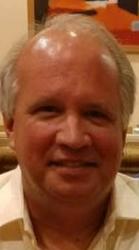When is less better than more?
Formula 1 has changed in the last few years following Liberty Media’s ownership of the sport. With more money and better audiences, thanks to the Drive to Survive series that became popular in the United States, additional items were added to the program.
Sprint races and races on street circuits are two additions getting attention these days.
Sprint races have been a staple in Formula Two, with a short sprint race on Saturday and a longer feature race the following day. But is it a good fit for Formula One? So far, the jury is out.
Fans seem ambivalent, while drivers aren’t generally inclined.
Then there are street circuits, which also have a Formula One analog in Formula E. Except for the Hermanos Rodriguez Circuit, Formula E is run on a prefabricated track built around a small part of the city and has no interrelation with traffic. It is cost-effective and does attract quite a few fans.
But do street circuits work well in Formula One?

Sketch of proposed street course in London (photo courtesy Motor Sport Magazine)
Of course, Monaco, where it all began, is the original street version with iconic status. Then there was Saudi Arabia for a time until a purpose-built track was constructed. Azerbaijan has a street course in Baku, Melbourne runs on the Albert Park circuit, Singapore has the Marina Bay Street circuit, and Madrid will launch its street course-based race beginning in 2026. Talks are underway in London that may yield the same outcome.
In addition to street racing in those international locales, street circuit racing is no stranger to the American scene, even though it has been with mixed results. First was Long Beach, whose high costs led managers to convert to Indy cars. Dallas had a street race, albeit for only one year. Detroit and Phoenix were two other short-running locales. Then, there was the parking lot-style situation in Las Vegas. None of those venues made the grade.
Today, there are Miami and Las Vegas, with Miami in the daytime and Las Vegas at night. Miami has been a hit, with over 200,000 fans attending this year. Las Vegas made adjustments after Carlos Sainz struck a drain plug last year during free practice. The race proceeded without incident, and a contract is now in place for the next five seasons.
The big question is: Is more better for the sport?
I know there’s the allure of huge money in the offing, but the sport also must keep tradition in mind. Expanding in ways that diminish tradition can make Formula One different from what it has been and also what it is meant to be.
















